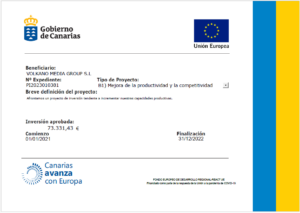The CDC’s National Center for Injury Prevention and Control [259] published guidelines for the development of intervention strategies for communities interested in adolescent and youth suicide prevention programs. The strategies focus on identifying youths at risk so as to direct them to healthcare centres, defining the risk factors, and providing support to manage stressful life events. The guidelines recommend making sure that suicide prevention programs are strongly linked with the mental health resources in the community.
MDEA related death in Crete
- Therefore, suicide prevention should focus on the diagnosis and treatment of alcoholism [63] and other substance-related disorders.
- Ethanol-induced NMDA inhibition in the cerebral cortex results in the reduction of noradrenaline and acetylcholine [136], and this might be related to the development of depression.
- In the latter study, the lowest levels of CSF-5HIAA were found in impulsive offenders with a past suicide attempt, perhaps suggesting that impulsivity and suicidality are independently and additively related to serotonergic dysfunction.
- The patients were also asked ‘At what age did you start to have problems with alcohol (beer, wine and vodka) or start to drink alcohol regularly?
Additionally, cognitive constriction (narrowed attention which reduces perceived potential solutions to a dichotomy—finding an immediate solution or committing suicide) is frequently observed prior to a suicide attempt [178]. Alcohol produces cognitive constriction through alcohol myopia [179], and this process has been confirmed by research showing that inhibition conflict (weighing pros and cons and identifying alternative solutions) mediates the relation between intoxication and social behavior [180]. Silverman et al. [31] revised O’Carroll’s nomenclature, focusing on suicide-related ideation, communication and behavior. They based their definitions on the presence or absence of suicidal intent and the presence or absence of injury.
Alcohol and depression
Most research on the topic is conducted in clinical populations, with few studies exploring this association across the general population. Our study indicates these combine to produce a 282 per cent increased risk of death by suicide. However, alcoholism and alcohol misuse can significantly increase one’s risk of death by suicide.
Limitations of performance status assessment in elderly with acute myeloid leukemia
Significant milestones like weddings, birthdays, and holidays are often celebrated with a toast. Yet of the 4,000 suicide deaths in our country each year, almost one in four involve alcohol. Research shows that heavy drinking may increase the risk of suicide by impairing decision making and making self-regulation more difficult. For those experiencing suicidal ideation, such drinking increases the risk of suicide exponentially. It is also essential to continue studying how prevention strategies focused on the reduction of risk factors (e.g., co-occurring depression) and the promotion of protective factors (e.g., positive social support) may reduce the likelihood of AUD and suicidal thoughts and behaviors.
Alcohol use and death by suicide: A meta-analysis of 33 studies
Alcohol use, both abuse and acute consumption, has been found to be an important contributing factor for suicidal behavior at the individual level [1,2,3,4]. A number of potential mechanisms have been proposed, including increases in impulsivity, aggression, depressive and suicidal thoughts, and feelings of hopelessness, especially if people are predisposed or have depression. In addition to the link on individual level, there is a relationship between alcohol consumption at the population (ecological) level and national https://sober-home.org/ suicide rates [1]. The latest article from Alcohol Research Current Reviews explores links between alcohol use and suicidal behavior. Alcohol misuse is robustly linked to heightened risk for suicidal ideation, attempts, and deaths in youths and adults [10, 15–17], a phenomenon not accounted for by comorbid psychiatric disorders [18]. Cross-national studies indicate a linear relationship between suicide rates and per-capita alcohol consumption [19, 20], suggesting that alcohol may be a key factor in suicide.
Studies were also excluded to avoid duplication where the sample either partially or fully overlapped with that of other studies included in the review [16,17]. This exclusion criterion particularly affected studies on the effect of the anti-alcohol Perestroika campaign in individual states (countries) of the former Union of Soviet Socialist Republics (USSR) [18,19]. If you drink heavily or notice signs of liver damage or other health issues that may be related to drinking too much alcohol, talk to your doctor about it. If necessary, they can refer you to a rehabilitation center to get the drinking under control. Excessive drinking makes up around 18% of ER visits and over 22% percent of overdose-related deaths compared to other substance misuse products like opioids. The researchers used data from the National Violent Death Reporting System to identify those who had used alcohol or showed signs of intoxication before they committed suicide between 2003 and 2011.
Alcohol has long been classified as a cancer-causing substance, but a study out Thursday gives a clearer sense of just how many cancer cases and deaths may be driven by drinking. Suicide prevention is primary with respect to alcohol use, but must take into account the alcohol abuse especially in cases where the alcohol use facilitates suicide behavior. The spouses of suicides who misused https://sober-home.org/drugs-brains-and-behavior-the-science-of-addiction-2/ alcohol were significantly more likely to react with anger than the spouses of those who did not. The children of parents with alcohol use disorder who completed suicide were less likely to feel guilty or abandoned than the children of non-alcohol-related suicides. Alcohol use disorder before suicide changes the affective responses in the spouses and the children who are left behind.
Reviewing the literature for the period 1991–2001, Cherpitel, Borges, and Wilcox [88] found a wide range of alcohol-positive cases for both completed suicide (10–69%) and suicide attempts (10–73%). Several case-control studies at the individual level have shown a high prevalence of alcohol abuse and dependence among suicide victims [89,90]. Kolves et al. in a psychological autopsy study reported that 68% of males and 29% of females who committed suicide met the criteria for alcohol abuse or dependence [89].
The NIMH Strategic Plan for Research is a broad roadmap for the Institute’s research priorities over the next five years. Learn more about NIMH’s commitment to accelerating the pace of scientific progress and transforming mental health care. Learn about NIMH priority areas for research and funding that have the potential to improve mental health care over the short, medium, and long term. “That’s something that if someone was doing a suicide risk screening that they could give to families, if families were open to that,” she said. In PSD, the number of students reporting that they “purposely hurt themselves without wanting to die in the past 12 months” fell from 26.4% in 2021 to 15.3% in 2023, according to district-specific data shared with the Coloradoan by the school district.
Ideally, future research would be longitudinal to identify the prospective relationships between alcohol, impulsivity, suicidal ideation and planned and unplanned suicidal behaviors. To our knowledge, only one prior study has examined the prevalence of suicide attempts during periods of heavy alcohol use among individuals with alcohol use disorders. Schuckit (1986) found that 85% of suicide attempts in men with an alcohol use disorder occurred while intoxicated. Similarly, 82% of the male participants in the present study reported that their most serious suicide attempt occurred during a heavy drinking episode. In contrast, only 44% of the women in the present study reported that their most serious suicide attempt occurred during a heavy drinking episode.
Two separate studies reported that 34–35% of suicide victims in Sweden had alcohol in their system at the time of suicide (Sjogren and Eriksson, 2000; Holmgren and Jones, 2010), which is similar to the rate of 32% reported in a German study of suicides (Boenisch et al., 2010). In Slovenia, others have found that up to 75% of suicide victims were intoxicated at the time of death (Bilban and Skibin, 2005). Data also suggest a dose–response relationship for alcohol consumption and risk of suicidal behaviors (Borges and Loera, 2010).
Alcohol is the most often detected substance in the body of a person who has committed suicide. It may be used to reduce the last instinctive hestitations to taking one’s own life. People with cancer-related depression often use alcohol as a means of coping but they very rarely use it in order to kill themselves through acute intoxication. However, a case of a cancer patient who committed suicide consuming two bottles of spirit was recently investigated and the conclusions are presented.
However, whether a history of suicide attempts is related to the risk for relapse in alcohol-dependent patients is still a matter of debate. Mood [10,16,17], anxiety [18] and schizophrenia-spectrum disorders [16,19,20] have been found to constitute independent risk factors for suicidal behavior. Additionally, co-morbid psychiatric disorders are found to be common in patients with alcohol use disorders [21–24]. Alcohol use is highly prevalent worldwide, and suicide is highly prevalent in populations of patients with alcohol use disorders. However, co-morbid psychopathology is neither sufficient nor necessary for this association [14]. Alcohol use and suicide are intimately linked, but they are both complex phenomena, springing from a multitude of factors.
Our analyses suggest that where alcohol use significantly disrupts day-to-day functioning, this may underpin the relationship between alcohol use and suicide-related outcomes to a greater extent than higher alcohol consumption. A recent study by investigators at the Centers for Disease Control and Prevention found about 17% of cancer deaths were attributable to low levels of alcohol consumption — less than the national dietary guidelines’ recommended cap of two drinks per day for men and one drink per day for women. A state of intoxication may trigger self-inflicted injuries, not only by increasing impulsivity, but also by promoting depressive thoughts and feelings of hopelessness, while simultaneously removing inhibiting barriers to hurting oneself [177].
The report noted that one possible explanation is that women are more likely than men to commit suicide by poisoning themselves, and alcohol may be used as one of the poisoning agents in combination with other substances. Another strong correlation is that alcohol and mind-altering substances are used as means of self-medication to cope with untreated mental health disorders, the symptoms of which are reciprocally exacerbated by substances. This causes a spiral effect of emotional decline and mental impairment that occurs with chronic alcohol and drug use and intoxication. For practical reasons, these studies should be based in settings that frequently treat those with AUDs who may be experiencing suicidal thoughts, such as AUD treatment programs, emergency departments, inpatient psychiatry units, and detoxification units. With the exception of inpatient psychiatry treatment, these are settings that typically do not involve much, if any, suicide-related assessment or treatment; thus, even minimal increases in the quantity/quality of suicide prevention may represent an improvement in the standard of care.




